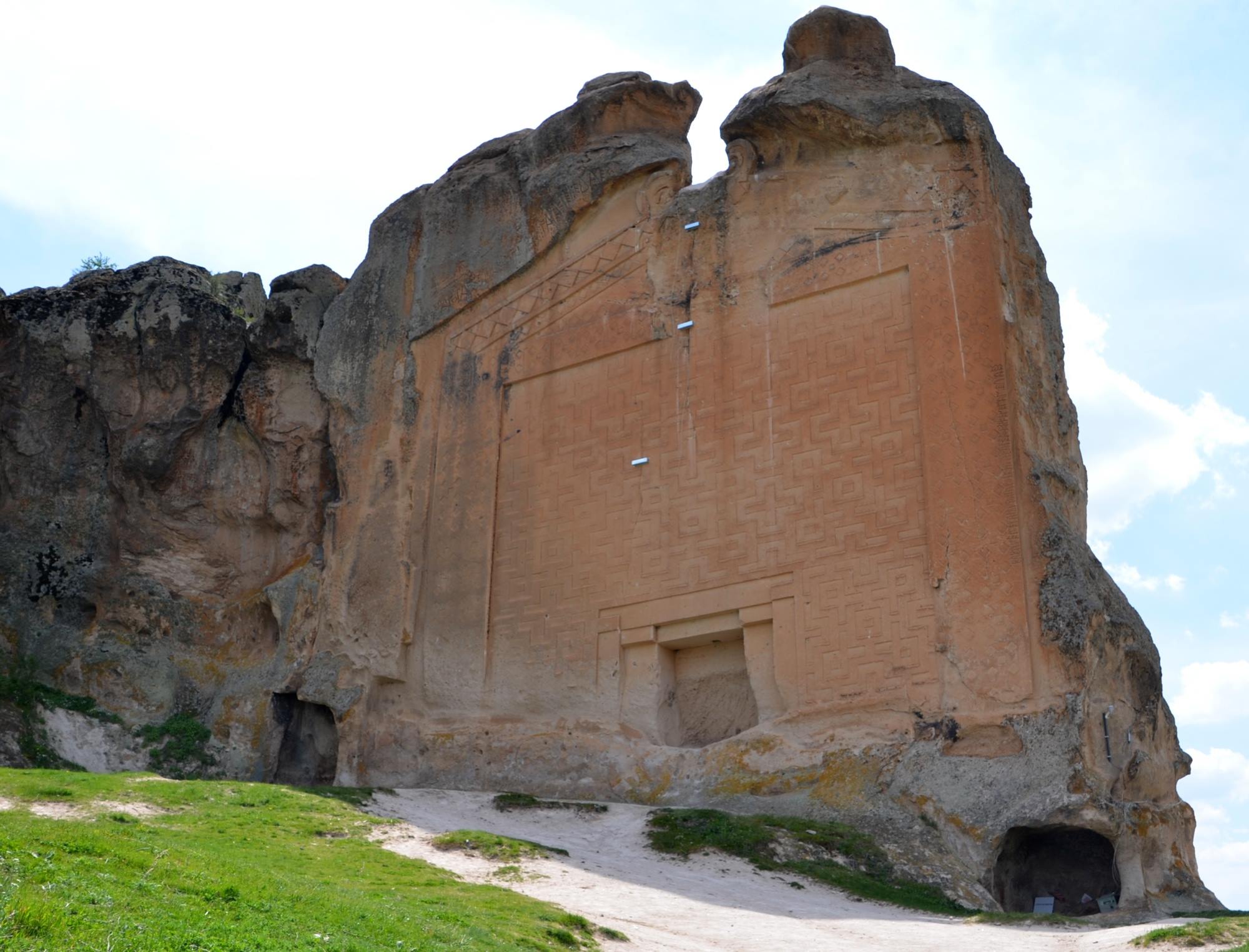
Are you fascinated by ancient civilizations and historical landmarks? If so, then prepare to be captivated by Yazilikaya, an extraordinary archaeological site located in Turkey. Yazilikaya, which means “Inscribed Rock” in Turkish, is an intriguing and enigmatic place that offers a glimpse into the religious beliefs and practices of the Hittites, an ancient civilization that thrived over 3,000 years ago.
As you explore the intricate carvings that adorn the walls of this ancient sanctuary, you will be transported back in time to a bygone era filled with gods, goddesses, and mythological figures. In this article, we will delve deeper into the rich history of Yazilikaya and unearth 13 intriguing facts that make it a must-visit destination for history enthusiasts and curious travelers alike.
Key Takeaways:
- Yazilikaya is an ancient rock sanctuary in Turkey, showcasing the artistic craftsmanship and religious practices of the Hittite civilization through intricate reliefs and open-air chambers.
- Designated as a UNESCO World Heritage Site, Yazilikaya’s hidden valley location and symbolic reliefs offer a serene and mysterious glimpse into the ancient Hittite rituals and cultural traditions.
Ancient Rock Sanctuary
Yazilikaya is an ancient rock sanctuary located in central Turkey. This historical site holds immense significance and offers a glimpse into the ancient Hittite civilization.
Unique Rock-Cut Chambers
One of the most fascinating aspects of Yazilikaya are its rock-cut chambers. These chambers are adorned with intricate reliefs and hieroglyphic inscriptions, showcasing the artistic craftsmanship of the Hittite people.
Religious Significance
Yazilikaya was a place of worship for the Hittites, who believed in a polytheistic religion. The reliefs found here depict various deities and mythological figures, providing valuable insights into their religious practices.
Open-Air Sanctuary
Unlike other Hittite sanctuaries, Yazilikaya is an open-air site. The chambers are carved into natural rock formations, creating a unique and awe-inspiring atmosphere for visitors.
The Great King’s Temple
Yazilikaya is home to the impressive “Great King’s Temple,” which contains the largest and most intricate relief in the sanctuary. This grand depiction showcases the Hittite kings’ close relationship with the gods.
Lunar Calendar
The reliefs in Yazilikaya have been linked to a lunar calendar, as the positioning of the figures aligns with the phases of the moon. This suggests that the sanctuary played a role in the Hittite lunar calendar system.
Mystery Surrounding the Reliefs
Despite extensive research, some of the reliefs at Yazilikaya still hold a certain level of mystery. The meanings behind certain symbols and figures remain unclear, leaving room for speculation and interpretation.
UNESCO World Heritage Site
In recognition of its cultural significance, Yazilikaya was designated as a UNESCO World Heritage Site in This status ensures its preservation for future generations to appreciate and study.
Hidden Geographical Location
Yazilikaya is situated in a hidden valley, making it a secluded and tranquil destination. The natural surroundings add to the overall allure of the site, creating a serene atmosphere for visitors.
Hittite Rituals and Ceremonies
Yazilikaya is believed to have been a focal point for Hittite rituals and ceremonies. The reliefs depicting processions and deities give us a glimpse into the religious practices and cultural traditions of this ancient civilization.
Reconstructed Sanctuary
The rock formations at Yazilikaya suffered significant damage over time, but extensive restoration efforts have ensured the preservation and reconstruction of this unique sanctuary, allowing visitors to experience its original grandeur.
Architectural Symmetry
Yazilikaya showcases remarkable architectural symmetry, with the positioning of the reliefs carefully planned and executed. This attention to detail highlights the advanced engineering skills of the Hittites.
Symbolic Artistic Expressions
The reliefs at Yazilikaya are not only visually stunning but also carry symbolic meanings. The artwork depicts various scenes of life, religion, and mythology, providing a valuable insight into the beliefs and culture of the Hittite civilization.
Conclusion
In conclusion, Yazilikaya is an incredible ancient site that continues to captivate visitors with its rich history and stunning rock-cut reliefs. From its religious significance to its artistic beauty, there is much to discover and appreciate at this unique landmark. Whether you are a history enthusiast or simply curious about ancient civilizations, a visit to Yazilikaya is sure to leave you in awe of the ancient Hittite culture and their remarkable craftsmanship. So, make sure to add Yazilikaya to your travel bucket list and immerse yourself in the wonders of this extraordinary archaeological site.
FAQs
1. What does Yazilikaya mean?
Yazilikaya translates to “inscribed rock” in Turkish. This name is highly appropriate as the site is adorned with intricate rock-cut reliefs.
2. What is the significance of Yazilikaya?
Yazilikaya is of great religious and cultural significance as it was once a sacred sanctuary dedicated to the Hittite gods. The reliefs depict a range of deities and mythological creatures, providing valuable insights into the Hittite pantheon.
3. When was Yazilikaya discovered?
Yazilikaya was discovered in 1834 by the German archaeologist Karl Richard Lepsius during his exploration of Anatolia. Since then, it has been extensively studied and admired by scholars and visitors alike.
4. Can visitors access the rock-cut reliefs?
While visitors cannot physically touch the reliefs, they can observe them up close within the protective enclosures. These enclosures ensure the preservation of the reliefs while allowing visitors to appreciate their intricate details.
5. Are there any guided tours available at Yazilikaya?
Yes, guided tours are available at Yazilikaya. Knowledgeable guides provide insightful information about the historical context and symbolism behind the reliefs, enhancing the overall visitor experience.
6. Is photography allowed at Yazilikaya?
Yes, photography is allowed at Yazilikaya. Visitors are encouraged to capture the beauty of the rock-cut reliefs; however, the use of flash photography may be restricted to preserve the artwork.
7. What other attractions are nearby Yazilikaya?
Nearby attractions include the magnificent Hattusa, the Hittite capital city, which is a UNESCO World Heritage Site. Visitors can also explore the Hittite archaeological Museum in nearby Bogazkale, which houses a vast collection of Hittite artifacts.
Yazilikaya's ancient rock sanctuary fascinates, but other sites beckon. Samarra Archaeological City reveals astounding archaeology from a bygone era. Hattusa, capital of the Hittite Empire, holds astonishing secrets waiting to be uncovered. Delphi's enigmatic ancient sanctuary draws visitors seeking to unravel its mysteries. Each destination offers unique insights into history, culture, and the human spirit. Why not embark on a journey of discovery and explore these captivating places for yourself?
Was this page helpful?
Our commitment to delivering trustworthy and engaging content is at the heart of what we do. Each fact on our site is contributed by real users like you, bringing a wealth of diverse insights and information. To ensure the highest standards of accuracy and reliability, our dedicated editors meticulously review each submission. This process guarantees that the facts we share are not only fascinating but also credible. Trust in our commitment to quality and authenticity as you explore and learn with us.


